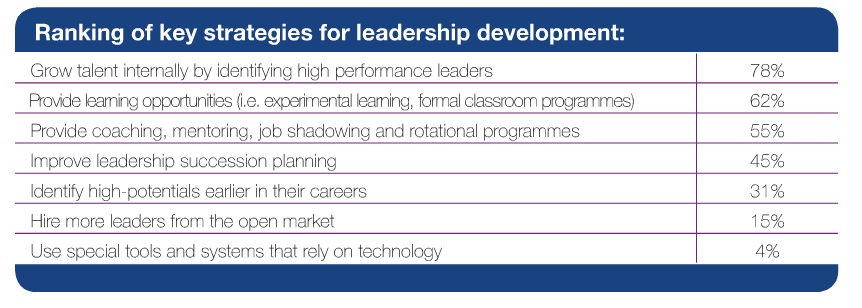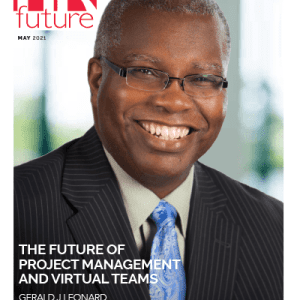Create a culture of training and development.
As a follow on from last month’s article where I focused on high performers and employees with high potential, this month the focus shifts to employee development. It is well worth noting that even when high performers and those with high potential have been correctly identified, they may still fail to realise their true potential to the organisation due to the absence of a well-defined, relevant and customisable development plan.
So the question that needs to be asked is, “What is the best way to develop high-potential talent to prepare the leaders of tomorrow?”
In research conducted by The Conference Board, Inc., they looked at key strategies for leadership development and how these were ranked by organisations, their finding being as follows:
As can be seen from the above research, the highest ranking mechanism for developing leaders is through growth of internal staff. The obvious benefits of following this route is that the organisation already has:
– an understanding of the employee’s capabilities;
– the employee already has a proven track record within the organisation;
– the employee understands the culture of the organisation; and
– the employee already has an established network of peers within the organisation.
All of the above factors become areas of risk when employing talent externally. This is not to say talent should never be sourced externally, but organisations should always try to prioritise their current staff whom they not only know but where they have probably already made a substantial investment in training and development.
When looking at developing internal staff this can be seen as a multi-pronged approach as there are various ways in which to empower employees for the future:

Formal training
Your specialist employees will always require continual development to maintain their subject matter knowledge. This would also include management programmes focusing on leadership development as these skills are important in their roles and in connecting with other leaders of the organisation.
Exposure
It is always important to expose your employees to both leaders and experts in the fields in which they operate. This helps them broaden their horizons not only in their specialised knowledge but also in how other leaders operate in different environments.
Experience
Employees will continually grow by participating in projects related to their field but should be encouraged to become involved in projects involving other high potential employees within the organisation.
However, as with most well defined initiatives that organisations plan to address, there are always barriers to their success, with some good examples being:
Cost Training and development budgets are the first to go when the squeeze for profit margins is on. A short sighted move at best, as it is the very nature of upskilling the employee is what enable the organisation to deliver more with less.
Time Training takes employees out of the workplace, thus reducing production time and, as the old adage goes, time is money, but how often is the cost of not training employees calculated through measurements such as having an inefficient workforce or staff turnover.
Lack of a development culture Organisations need to build training and development into everything they say and do. It needs to embed itself into the organisation’s culture. A learning organisation is one that is growing, and on the other end, an organisation that is not learning is effectively dying.
In conclusion, the leadership team is primarily responsible for creating a culture of developing talent within the organisation, and although leaders are widespread in their acknowledgement of the importance of developing staff, too few actually empower the organisation to follow through with this initiative.
Rob Bothma is an HR Systems Industry Specialist at NGA Africa, a non-executive director, Fellow and Vice President of the Institute of People Management and co-author of the 4th Edition of Contemporary Issues in HRM and member of the Executive Board for HR Pulse.
References
How to unleash the high potential talent in your organisation, Right Management, Manpower Group;
Is your high potential program relevant for the talented non-manager? Jacques Quinio, EMEA Leadership Development Solutions Director & UKI Talent Management Principal Consultant, The Conference Board, Inc.
This article appeared in the December 2015 issue of HR Future magazine.














